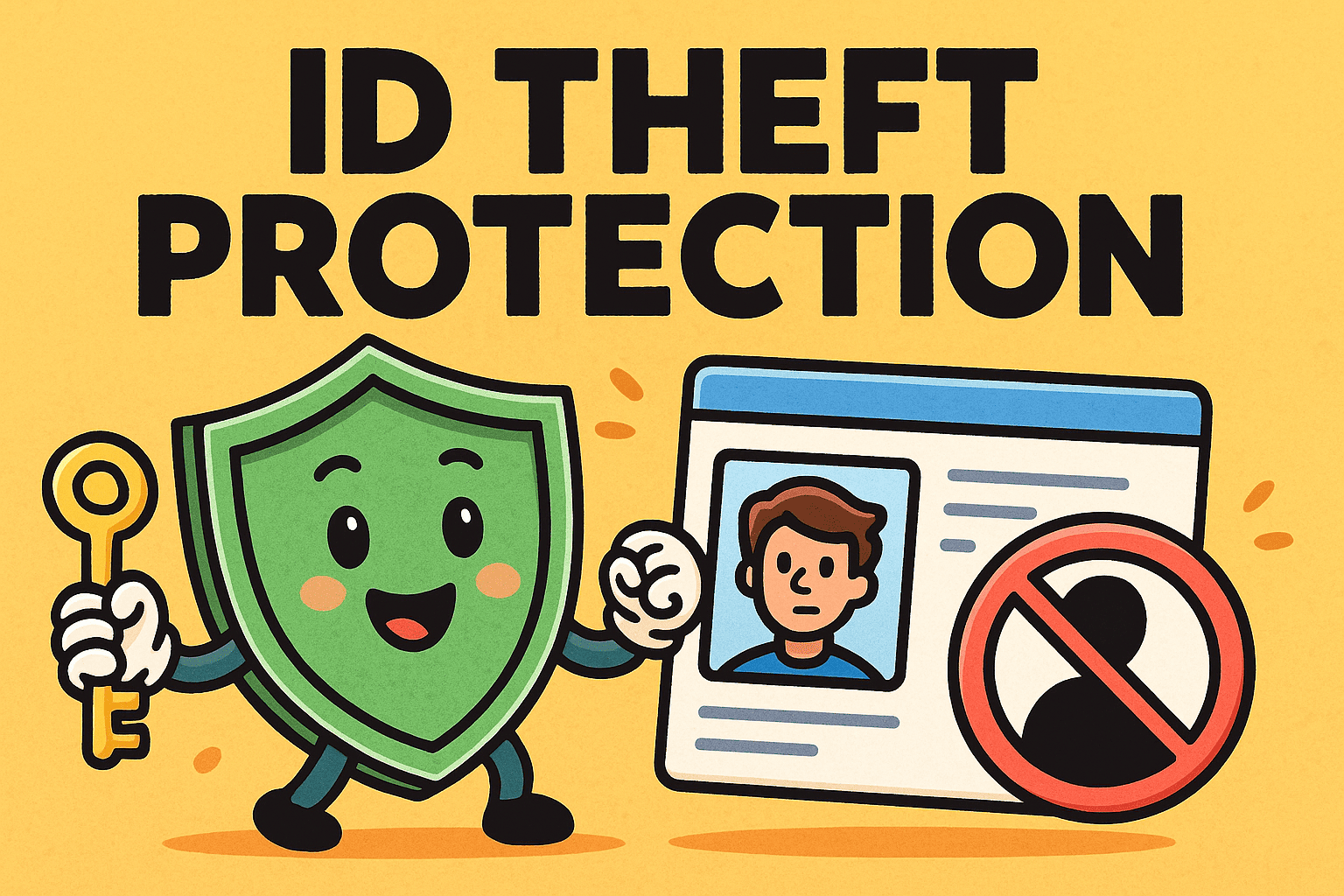Updated on October 6, 2025, by OpenEDR
Imagine waking up to find that your bank account has been drained or that loans were taken out in your name. Unfortunately, this scenario is becoming increasingly common. According to Javelin Strategy & Research, identity theft cost U.S. consumers $43 billion in 2022 alone. That’s why ID theft protection is now a top priority for businesses, IT managers, and individuals alike.
Introduction: Why ID Theft Protection Is Essential
ID theft protection refers to a set of tools, monitoring systems, and best practices designed to safeguard personal and organizational data from cybercriminals. With cyberattacks, phishing, and data breaches on the rise, adopting strong protection measures is no longer optional—it’s a necessity.
What Is ID Theft Protection?
ID theft protection is the proactive process of detecting, preventing, and responding to identity theft attempts. It involves monitoring sensitive personal and business information, alerting users to suspicious activity, and providing recovery assistance if fraud occurs.
Key elements include:
Credit Monitoring – Alerts for unusual changes in credit reports.
Dark Web Monitoring – Detects leaked personal data online.
Fraud Alerts & Freezes – Blocks unauthorized accounts or transactions.
Restoration Services – Helps victims recover lost identities.
👉 In short: ID theft protection is about preventing cybercriminals from misusing personal or business data for fraud.
Why ID Theft Protection Matters for Businesses
While identity theft is often associated with individuals, businesses are equally at risk. Hackers target employees, executives, and companies for profit and espionage.
Risks Businesses Face Without ID Theft Protection
Financial Fraud – Criminals use stolen credentials to steal funds.
Data Breaches – Exposed customer data leads to lawsuits and fines.
Reputation Damage – Loss of customer trust after fraud incidents.
Compliance Issues – Non-compliance with GDPR, HIPAA, or PCI DSS.
👉 Example: A CEO’s stolen email credentials can lead to Business Email Compromise (BEC) attacks, costing organizations millions.
How ID Theft Protection Works
Most ID theft protection services use multi-layered security to detect fraud early and stop criminals.
Data Monitoring
Scans credit bureaus, banks, and dark web forums.
Alerts & Notifications
Sends real-time alerts for suspicious activity.
Preventive Tools
Offers password managers, VPNs, and antivirus software.
Recovery Assistance
Provides support teams to restore stolen identities.
Features to Look for in ID Theft Protection Services
When evaluating ID theft protection, businesses and individuals should ensure the service includes:
✅ Credit Report Monitoring – Tracks accounts, loans, and hard inquiries.
✅ Dark Web Scans – Detects stolen social security numbers, logins, or card details.
✅ Bank & Transaction Alerts – Flags unusual financial activity.
✅ Identity Restoration Help – Provides dedicated specialists.
✅ Insurance Coverage – Offers reimbursement for fraud losses.
✅ Cybersecurity Integrations – Works with antivirus, EDR, and firewalls.
Types of ID Theft
Identity theft comes in several forms. Recognizing them helps with prevention:
Financial ID Theft – Using stolen credit card or bank details.
Medical ID Theft – Using another’s information for healthcare.
Criminal ID Theft – Posing as someone else during arrests or crimes.
Synthetic ID Theft – Combining stolen data with fake details to create new identities.
Business Identity Theft – Hijacking corporate details to defraud clients or vendors.
ID Theft Protection for Individuals vs Businesses
| Feature | Individuals | Businesses |
|---|---|---|
| Primary Focus | Credit monitoring, personal data | Employee & corporate data |
| Tools Used | Alerts, monitoring, restoration | EDR, IAM, Zero Trust, training |
| Risk Impact | Financial loss, personal stress | Data breaches, lawsuits, revenue loss |
| Example Threat | Credit card fraud | Business Email Compromise (BEC) |
👉 Verdict: Both groups need ID theft protection, but businesses require enterprise-grade solutions integrated with cybersecurity frameworks.
ID Theft Protection and Cybersecurity
Identity theft protection works best when paired with cybersecurity strategies. Businesses can combine:
Endpoint Detection & Response (EDR) – Detects suspicious device activity.
Zero Trust Security – Verifies every user before granting access.
Encryption Tools – Protects sensitive data in storage and transit.
Employee Training – Reduces phishing and social engineering attacks.
Best Practices for ID Theft Protection
To minimize risks, organizations and individuals should:
✅ Use multi-factor authentication (MFA) everywhere.
✅ Regularly update passwords and avoid reusing them.
✅ Monitor bank statements and credit reports monthly.
✅ Limit data sharing on social media and public platforms.
✅ Train staff to recognize phishing and fraud attempts.
✅ Deploy EDR solutions for advanced monitoring.
The Future of ID Theft Protection
Identity theft will continue to evolve, but so will protection tools. Expect advancements in:
AI-Powered Fraud Detection – Predicts anomalies in real time.
Biometric Authentication – Replacing passwords with facial or fingerprint scans.
Blockchain Identity Systems – Decentralized identity verification.
IoT Security Integration – Protecting smart devices from identity misuse.
FAQs: ID Theft Protection
1. What is the best way to protect against identity theft?
Use ID theft protection services, enable MFA, and monitor your financial and personal accounts regularly.
2. Can businesses benefit from ID theft protection?
Yes. Companies face risks like BEC, fraud, and compliance violations, making enterprise-level protection essential.
3. Does ID theft protection guarantee safety?
No service is 100% effective, but it significantly reduces risk and speeds up recovery.
4. What’s the difference between ID theft protection and credit monitoring?
Credit monitoring only tracks financial accounts, while ID theft protection includes broader monitoring, alerts, and recovery assistance.
5. Is ID theft protection expensive?
Costs vary, but most services offer affordable personal plans and scalable enterprise solutions.
Conclusion: ID Theft Protection as a Security Essential
So, what is ID theft protection? It’s a proactive shield against fraud that combines monitoring, alerts, and recovery services. For individuals, it provides peace of mind. For businesses, it prevents devastating financial and reputational losses.
However, ID theft protection alone isn’t enough. The strongest defense comes from pairing it with cybersecurity strategies like EDR, Zero Trust, and employee awareness training.
👉 Don’t wait for fraud to happen. Strengthen your defenses today: Register for OpenEDR Free
